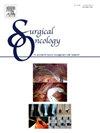Effective factors on postoperative 30–90 and 360-day mortality in non-small cell lung cancer
IF 2.3
4区 医学
Q3 ONCOLOGY
引用次数: 0
Abstract
Purpose
Postoperative mortality and morbidity are serious problems, and the identification of risky patient groups will reduce mortality and morbidity rates. The aim of our study was to determine the mortality at 30, 90, and 360 days in patients who underwent surgical resection for non-small cell lung cancer (NSCLC).
Methods
In this single-center retrospective study, 935 patients who were operated on for NSCLC were included. Demographic characteristics, laboratory data, tumor characteristics, surgical method used, type of resection, postoperative complications, and the relationship between 30, 90, and 360-day mortality were analyzed.
Results
In-hospital mortality was observed in 21 (2.2 %) of the 935 patients; the 30-90-360-day mortality rate was respectively 3 %, 4.9 %, and 12.1 %. The 30- and 90-day mortality rates were close (3 %, 4.9 % respectively), and the only difference was the additional surgical procedure. The common factors that increased 30-, 90-, and 360-day mortality were advanced disease stage, additional surgical procedure, length of stay longer than 7 days, low % forced vital capacity (FVC), presence of comorbidities, presence of postoperative complications, and pneumonectomy.
Conclusion
In this study, 30-, 90-, and 360-day mortality rates and common and independent risk factors affecting mortality were determined. Although 30-day mortality is the most often utilized time period for assessing postoperative mortality, 90-day mortality can be used to predict postoperative mortality following a major surgical procedure. Preoperative mortality and morbidity are expected to decrease with more detailed preoperative examination of high-risk patients and special follow-up programs in the postoperative period.
影响非小细胞肺癌术后 30-90 天和 360 天死亡率的有效因素。
目的:术后死亡率和发病率是严重的问题,识别高危患者群体将降低死亡率和发病率。我们的研究旨在确定非小细胞肺癌(NSCLC)手术切除患者在 30 天、90 天和 360 天的死亡率:在这项单中心回顾性研究中,共纳入了 935 名接受手术治疗的非小细胞肺癌患者。分析了人口统计学特征、实验室数据、肿瘤特征、手术方法、切除类型、术后并发症以及 30 天、90 天和 360 天死亡率之间的关系:935名患者中有21人(2.2%)出现院内死亡;30-90-360天死亡率分别为3%、4.9%和12.1%。30天和90天的死亡率接近(分别为3%和4.9%),唯一的区别是多了一个手术过程。增加30天、90天和360天死亡率的常见因素包括:疾病分期较晚、额外的外科手术、住院时间超过7天、用力肺活量(FVC)百分比较低、存在合并症、术后并发症和肺切除术:本研究确定了 30 天、90 天和 360 天死亡率以及影响死亡率的常见和独立风险因素。虽然 30 天死亡率是评估术后死亡率最常用的时间段,但 90 天死亡率也可用于预测大手术后的死亡率。通过对高危患者进行更详细的术前检查和术后特别随访计划,术前死亡率和发病率有望降低。
本文章由计算机程序翻译,如有差异,请以英文原文为准。
求助全文
约1分钟内获得全文
求助全文
来源期刊

Surgical Oncology-Oxford
医学-外科
CiteScore
4.50
自引率
0.00%
发文量
169
审稿时长
38 days
期刊介绍:
Surgical Oncology is a peer reviewed journal publishing review articles that contribute to the advancement of knowledge in surgical oncology and related fields of interest. Articles represent a spectrum of current technology in oncology research as well as those concerning clinical trials, surgical technique, methods of investigation and patient evaluation. Surgical Oncology publishes comprehensive Reviews that examine individual topics in considerable detail, in addition to editorials and commentaries which focus on selected papers. The journal also publishes special issues which explore topics of interest to surgical oncologists in great detail - outlining recent advancements and providing readers with the most up to date information.
 求助内容:
求助内容: 应助结果提醒方式:
应助结果提醒方式:


